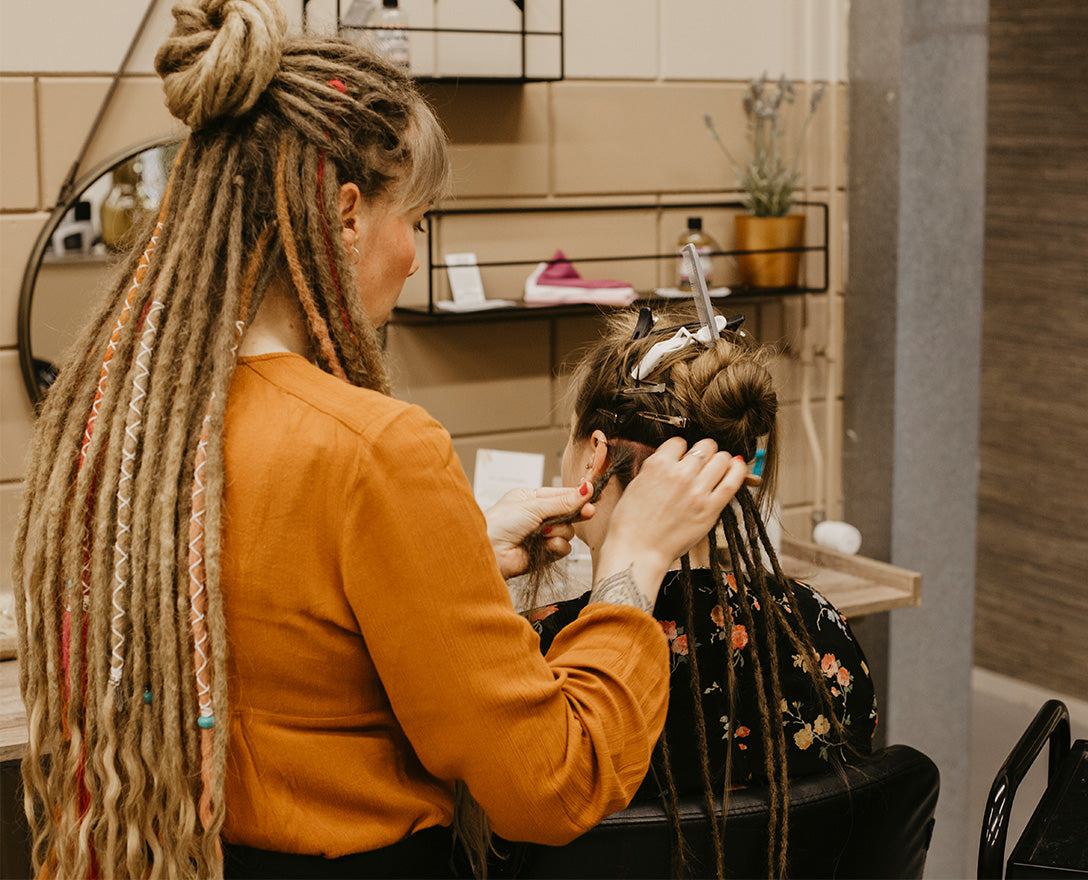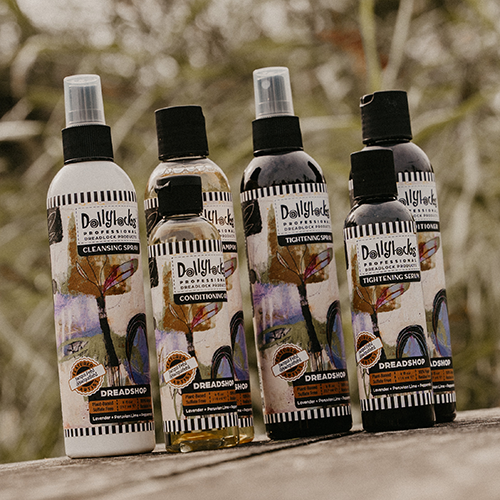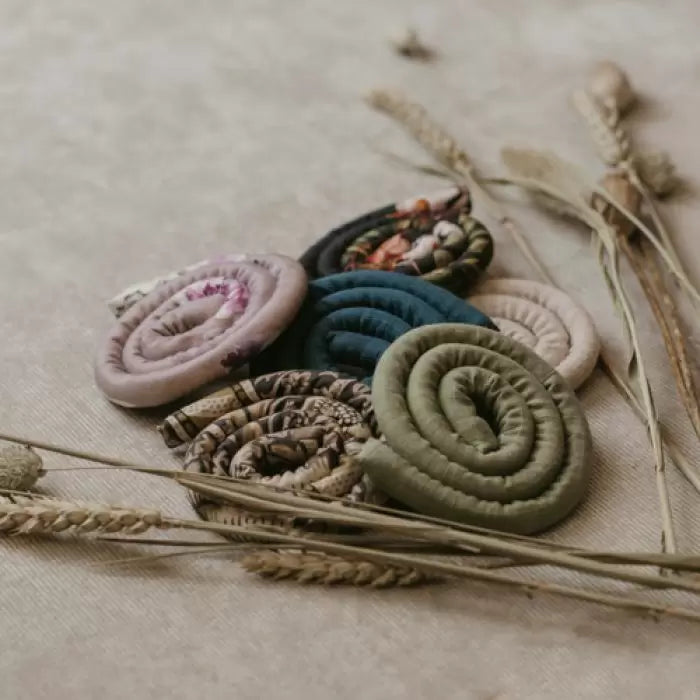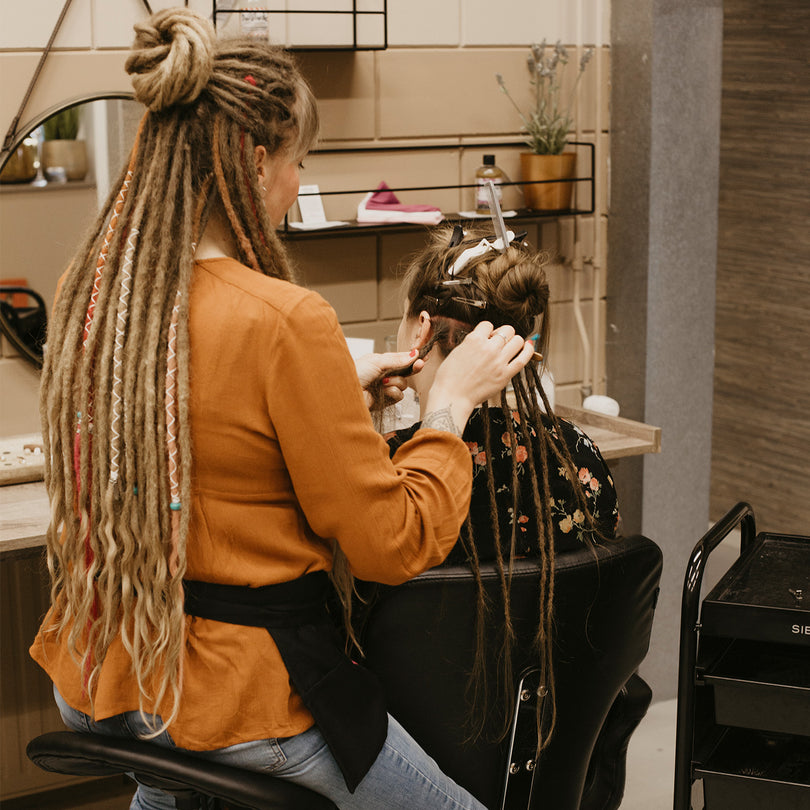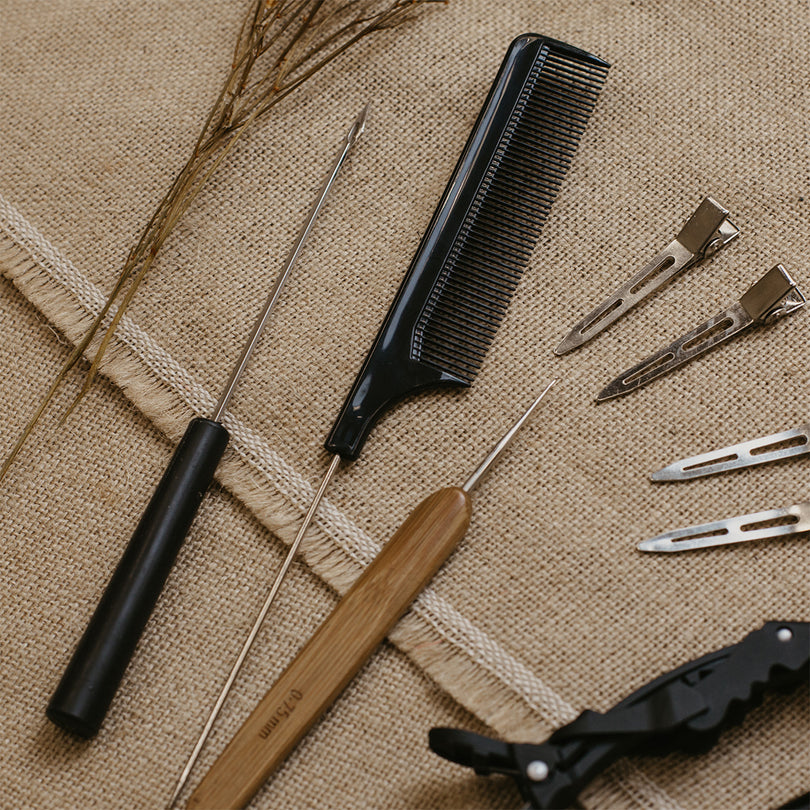Help, my hair is thinning!
When your hair is thinning it can have various causes, such as stress, weight loss, medication, illness or aging. For serious issues, we of course recommend seeing your doctor to see if something can be done about it. But this is still very frustrating, and the last thing you want is for your dreadlocks to break off.
Can I add extra hair to make the dreadlock thicker?
The most obvious and easiest solution might seem to be simply adding extra hair to make the dreads thicker at the roots. We strongly advise against this, and below we’ll explain why:
Adding extra hair is a temporary solution. As your hair continues to grow, the problem will keep coming back. The amount of hair in the section of the dread remains the same, so you’ll constantly need to add extra hair at the roots. By continuously adding extra hair, you also keep adding more weight to the dread, increasing the risk of the dread breaking off anyway.
Can I backcomb and crochet the roots of my dread very tightly?
Another solution that isn’t ideal is tightly backcombing and crocheting the new growth close to your scalp. In some cases, this might work, as you’re making that part of the dread slightly thicker because of backcombing the hair together. However, this doesn’t solve the problem either, and it will keep coming back as your hair continues to grow: there’s still the same amount of hair in the section, and the dread will grow thinner again.
So, what can I do?
If your dreads are getting very thin at the roots and your dreads are at risk of breaking, here are some options:
- If there is another dread close to the thinning dread that has also become thinner, you can merge the two thin dreads into one thicker dreadlock, strengthening the base of the dread. The best time to do this is when you have a few centimeters of new growth, making it easier to crochet the grown-out hair into one dread.
It may not always be possible to merge the entire length of the dreads, especially if your dreads are several years old and have become very firm and compact. In that case, you can choose to crochet only the first part of the dreads together, so the base is one dread that splits into two ends later on. If you don’t like having a dread with two ends, you can also choose to cut off one of the ends.
- Another drastic option is to comb out your dreads and redo the sectioning with larger sections, making the base of the dreads stronger.
- If you have partial dreads and loose hair directly above the dread with thinning roots, you can add extra hair to make the section larger and thicken the dread, thereby strengthening the base.
When it only feels like your dreads have thinned
It’s also possible that your dreads haven’t actually thinned at the roots, but the dreads have shrunk significantly in the early stages of their life and are thicker at the ends compared to the new growth. In that case, often the base of your dreads is strong, but your dreads are uneven in thickness. If you don’t like the thicker ends, you can choose to cut off the thicker parts of the dreads and potentially add new, thinner extensions, making your dreads more uniform in thickness. A good way to prevent your dreads from shrinking is by palmrolling them regularly.
If it’s been several months since your dreads were last maintained and you have a few centimeters of new growth, it might feel like you have less hair at the roots and your dreads are getting thinner. Especially if your dreads are fairly thin, it can feel this way quicker. It’s possible that once your dreadlocks have been maintained again and the hair has been dreaded, the dread will feel strong enough again. So sometimes it’s enough to simply have your dreads maintained.
If it’s been more than six months since your dreads were maintained, you probably have quite a long section of new growth that hasn’t been dreaded and appears to be getting thinner. You lose 80-100 hairs daily, and these hairs stay trapped in the dreads roots but detach from the scalp. Additionally, new hairs grow back, and the new hairs growing in the middle of the dread section will often naturally tangle into the dread. However, the hairs growing around the dread are more likely to stay loose. How easily your hair tangles at the roots can vary greatly depending on your hair type. Generally, the straighter and finer your hair, the less likely it is to naturally form a dread. The result is that your dreads hang on increasingly thinner strands of hair. So the longer you go without maintaining your dreads, the thinner the section at the roots will become, increasing the risk of breakage.
Dreadshop’s advice is to have your dreads maintained every 3-4 months. Are your dreads in urgent need of maintenance? Book your appointment here! Or do you want to learn how to maintain your dreadlocks yourself? We’d be happy to teach you here!
